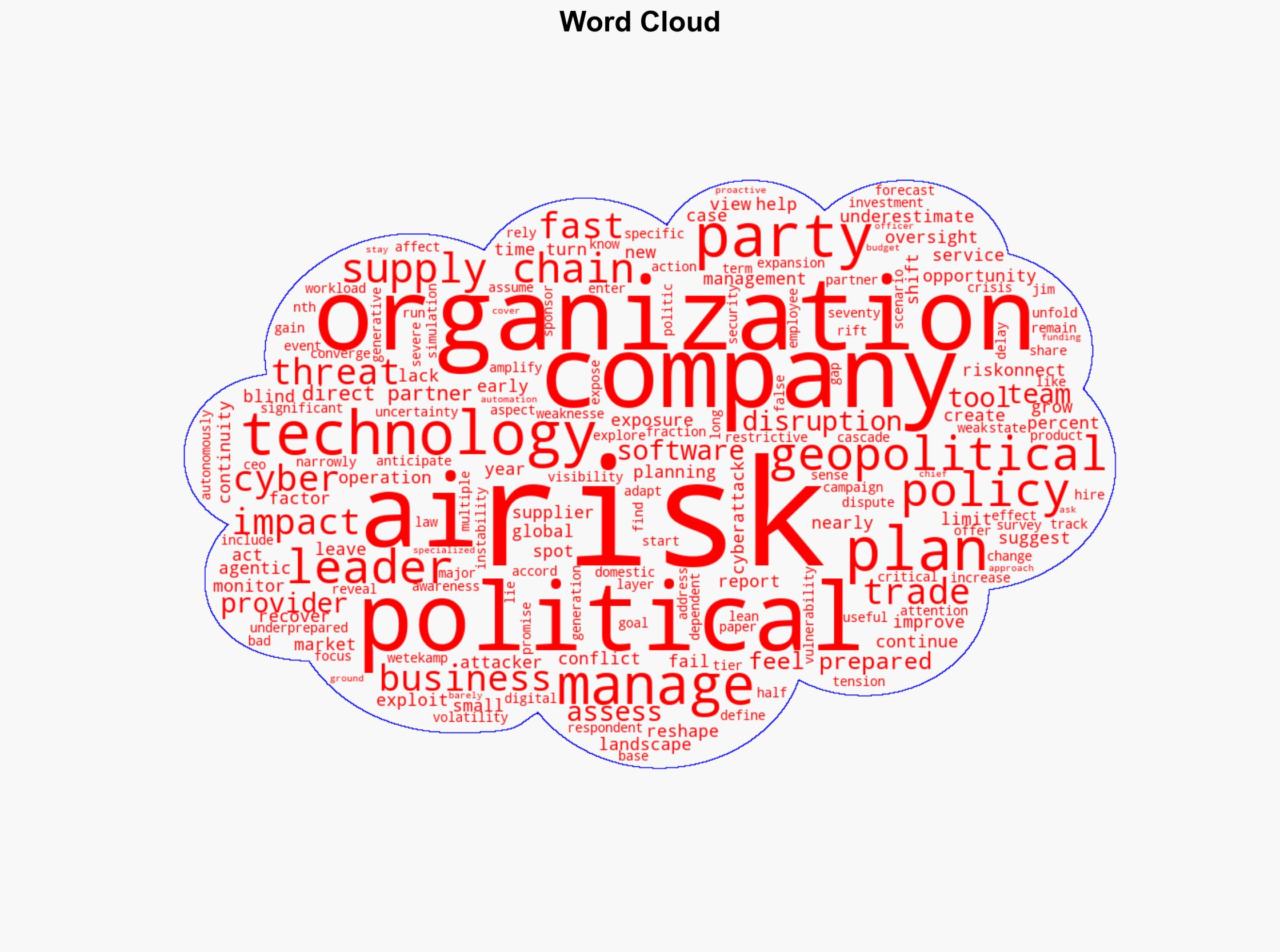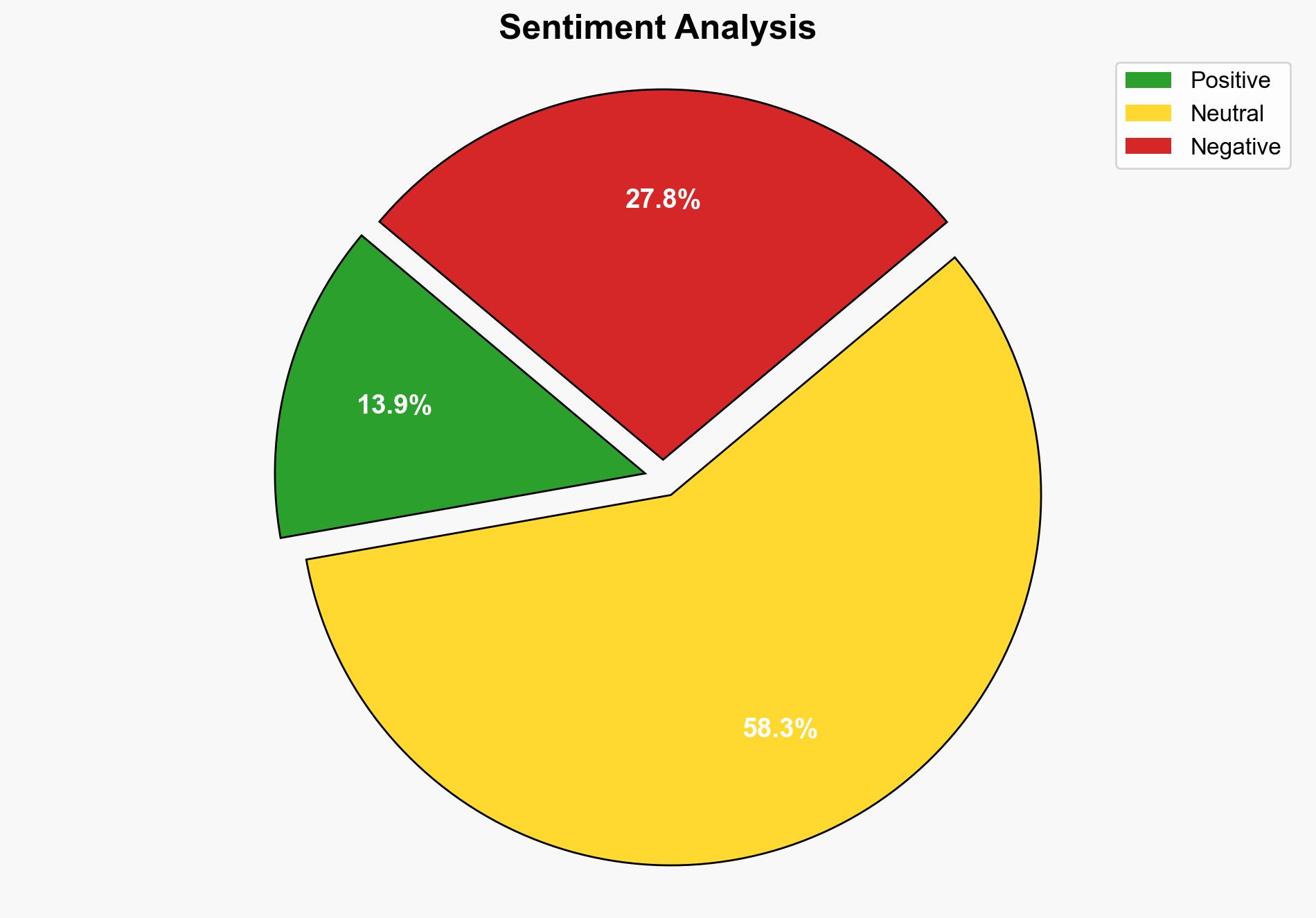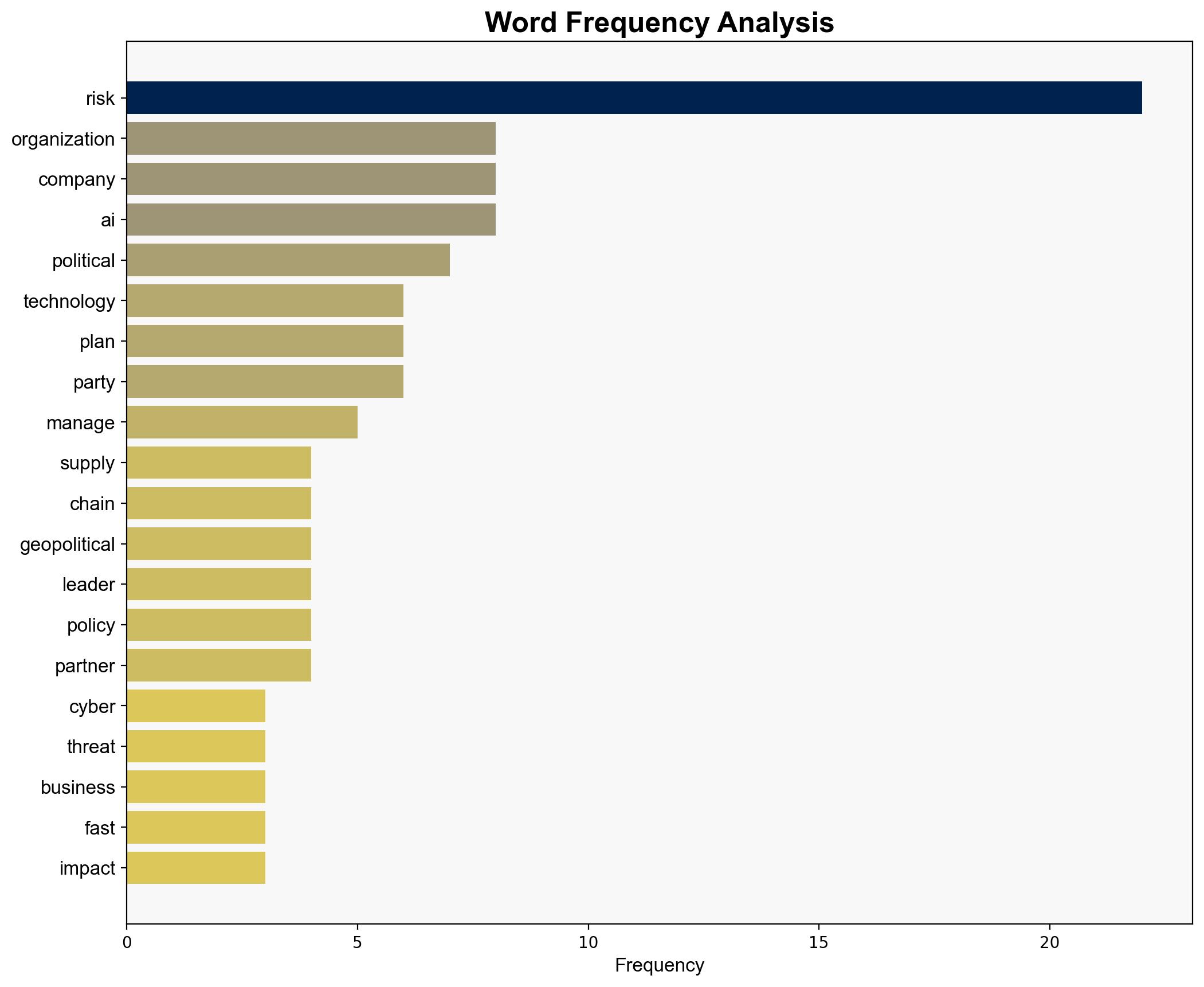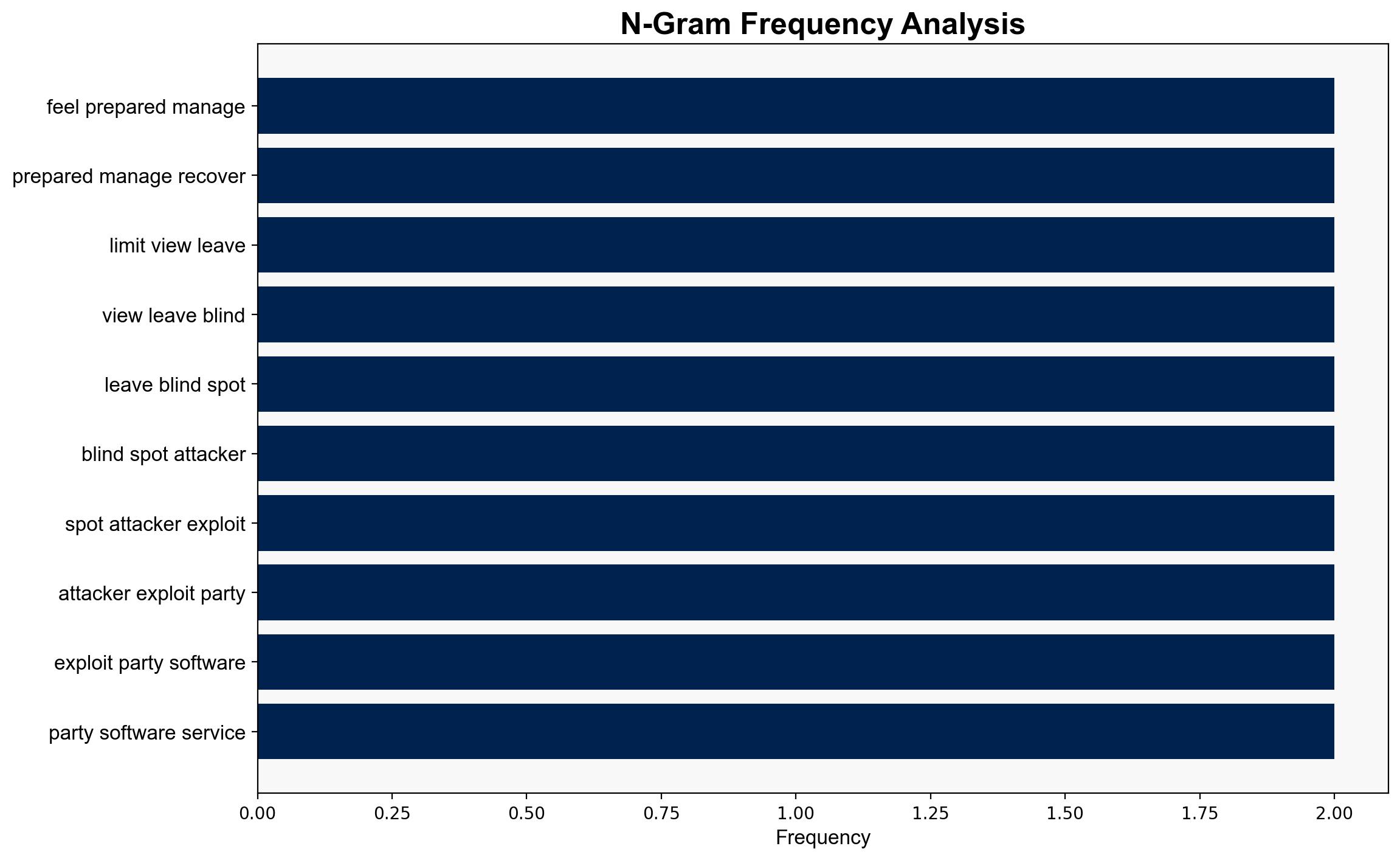The next cyber crisis may start in someone elses supply chain – Help Net Security
Published on: 2025-10-23
Intelligence Report: The next cyber crisis may start in someone else’s supply chain – Help Net Security
1. BLUF (Bottom Line Up Front)
The most supported hypothesis is that the next significant cyber crisis will originate from vulnerabilities within third-party supply chains, exacerbated by inadequate risk management and geopolitical tensions. Confidence level: Moderate. Recommended action: Enhance visibility and oversight of supply chain networks, prioritize AI-driven risk management tools, and develop comprehensive geopolitical risk strategies.
2. Competing Hypotheses
Hypothesis 1: The next cyber crisis will emerge from vulnerabilities in third-party supply chains due to inadequate risk management and geopolitical tensions. This hypothesis is supported by the growing gap between awareness and action, limited visibility into digital supply chains, and the increasing complexity of geopolitical risks.
Hypothesis 2: The next cyber crisis will be driven by the autonomous actions of agentic AI systems, which may act unpredictably or be exploited by malicious actors. This hypothesis is supported by the lack of oversight in AI deployment and the potential for AI to be used as a tool for cyberattacks.
3. Key Assumptions and Red Flags
Assumptions:
– Organizations have limited visibility into their supply chains beyond direct partners.
– Geopolitical tensions will continue to rise, increasing the risk of state-sponsored cyberattacks.
– AI technologies will be increasingly integrated into risk management without adequate oversight.
Red Flags:
– Overreliance on paper-based continuity plans.
– Limited monitoring of risks beyond direct partners.
– Underestimation of the impact of geopolitical shifts on supply chains.
4. Implications and Strategic Risks
The convergence of cyber, geopolitical, and technological risks could lead to cascading failures across global supply chains. Economic impacts may include delays in technology investments and expansion plans. Cyber threats could escalate due to increased exposure from restrictive trade policies and state-sponsored activities. Psychological impacts may arise from the perceived inability to manage these complex risks effectively.
5. Recommendations and Outlook
- Enhance supply chain visibility by implementing advanced monitoring tools and AI-driven analytics.
- Develop comprehensive geopolitical risk management strategies that account for rapid policy changes and potential conflicts.
- Scenario-based projections:
- Best Case: Organizations successfully integrate AI tools to enhance risk management, reducing vulnerabilities.
- Worst Case: A major cyber crisis disrupts global supply chains, leading to significant economic and operational impacts.
- Most Likely: Incremental improvements in risk management, with occasional disruptions due to unforeseen geopolitical events.
6. Key Individuals and Entities
Jim Wetekamp, CEO of Riskonnect, is a key figure in advocating for improved risk management practices.
7. Thematic Tags
national security threats, cybersecurity, counter-terrorism, regional focus





